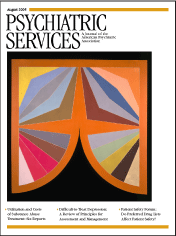If readers could understand and make use of all that is packed into Our Inner World: A Guide to Psychodynamics and Psychotherapy, by Scott R. Ahles, M.D., their understanding of emotional states and psychodynamic psychotherapy would be greatly enhanced. I found the going easy—but then, I've read much of this material previously; Freud, Mahler, Kohut, Kernberg, Bowlby, and others are familiar authors to me. My guess is that other readers, particularly mental health practitioners and students of psychodynamic psychotherapy, would find the book a bit challenging but nonetheless useful.
The concepts, diagrams, and case illustrations are all very clearly presented and linked together. Particularly good is the author's illustration of the use of dynamic insights within a short-term psychotherapy approach. I was disappointed only in the failure to illustrate the usefulness of dynamic insights within a supportive, less than weekly, long-term therapeutic undertaking. Psychodynamic psychotherapy and managed care do not have to be incompatible, and this book takes us only part of the way toward that kind of reconciliation.
Ahles focuses on the two major areas of patient difficulty: problems with the self, as illustrated by symptoms of anxiety, depression, low self-esteem, and feelings of worthlessness; and problems with interpersonal relationships, especially in marriage, with boyfriends, or with children. He also makes the important distinction between the ability to relate to others in general and the special difficulty that many people have in intimate relationships. Examples of how early family experiences set the stage for these difficulties with close relationships is particularly well illustrated and discussed.
Part 1 of the book goes through the various mainstay concepts of psychodynamics. The author introduces the id, the ego, and the superego and gives examples of how interactions might become conflicted, leading to psychopathology. Next, the whole process of separation-individuation of self and other representations is presented, leading to the concept of a person's internalized sense of self and of other. Attachment theory is next, with the author using that framework to explain how a person relates to others.
Part 2 discusses development across the phases of the life span—the development of a healthy sense of self and the development of healthy relationships. What can go wrong is illustrated with a series of short case examples of people from different age groups and their age-appropriate problems.
Part 3 deals with psychotherapy. It delineates some of the tools of psychodynamic psychotherapy: empathy, explanation, mourning, and the patient-therapist relationship. Several cases are presented to illustrate the gathering of pertinent information to make a formal DSM diagnosis, as well as a psychodynamic one. Psychotherapy is illustrated, using interventions that facilitate and monitor the patient's inner emotional balance and healthy interaction with others.
This is a good book, conceptually sound and likely to be useful for anyone who is interested in understanding patients or clients from a traditional psychodynamic perspective. It does a good job of explaining fairly difficult concepts of personality development without being simplistic. If either beginning or experienced therapists find that cognitive, behavioral, solution-focused, or pharmaceutical therapies are not enough for them or their patients, they might want to revisit psychodynamic psychotherapy. This very readable book is a good place to start.

